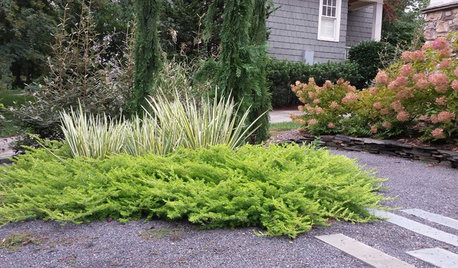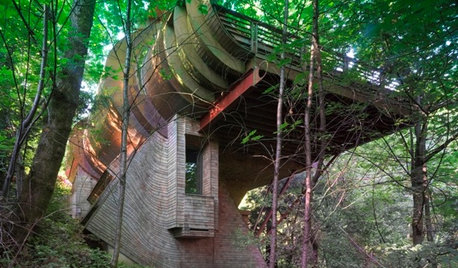Sarracenias aren't growing.
shubies
16 years ago
Related Stories

GARDENING GUIDESWhat’s in a Name? See 6 Wildflowers That Aren’t ‘Weeds’ at All
Dispel the stereotypes of weeds and try these wildlife-supporting native wildflowers in your garden
Full Story
PLANTING IDEASThese Aren’t Your Grandparents’ Junipers
Dislike junipers? Maybe it’s time to discover new varieties and new uses for this garden workhorse
Full Story
LIFEYou Said It: ‘It’s Different ... But Then, Aren’t You?’ and More Wisdom
Highlights from the week include celebrating individuality and cutting ourselves some decorating slack
Full Story
FARM YOUR YARD10 Easy Edibles to Grow in Containers
These herbs, vegetables and fruits are just as happy in a pot as they are in the ground
Full Story
EDIBLE GARDENSHow to Grow Your Own Luscious Cherries
Nope, they’re not the easiest fruit to grow. But with spectacular blossoms and pies as possibilities, cherries are sure worth a try
Full Story
FRUIT TREESHow to Grow Your Own Juicy Plums
Easier than other stone fruits and with a variety of colors to choose from, plums are a versatile garden addition
Full Story
NATIVE PLANTSGreat Native Plant: Grow Wild Quinine for Its Unique Clusters of Blooms
Get connoisseur cred and unique blooms with this uncommon plant. Bonus assets: It’s low maintenance and drought tolerant
Full Story
EDIBLE GARDENSSummer Crops: How to Grow Pumpkins
Start in spring to grow your own fall decorations and have plenty left for pies
Full Story
EDIBLE GARDENSSummer Crops: How to Grow Squash
Almost foolproof and with cheerful flowers, squash comes in a wide range of varieties to plant in spring
Full Story
EDIBLE GARDENSHow to Grow 10 Favorite Fruit Trees at Home
Plant a mini orchard in fall, winter or early spring to enjoy fresh-off-the-tree fruit the following year
Full StorySponsored






tommyr_gw Zone 6
mutant_hybrid
Related Professionals
Derry Landscape Architects & Landscape Designers · Kapaa Landscape Architects & Landscape Designers · Bowie Landscape Contractors · Danvers Landscape Contractors · Fair Lawn Landscape Contractors · Lemoore Landscape Contractors · North Plainfield Landscape Contractors · Paterson Landscape Contractors · Pompano Beach Landscape Contractors · Round Lake Landscape Contractors · St. Louis Landscape Contractors · Tewksbury Landscape Contractors · The Woodlands Landscape Contractors · Citrus Heights Swimming Pool Builders · North Hollywood Swimming Pool Builderspetiolaris
shubiesOriginal Author
hunterkiller03
mutant_hybrid
mutant_hybrid
tommyr_gw Zone 6
mutant_hybrid
shubiesOriginal Author
dnieter
mutant_hybrid
jodik_gw
mutant_hybrid
jodik_gw
ilbasso_74
mutant_hybrid
shubiesOriginal Author